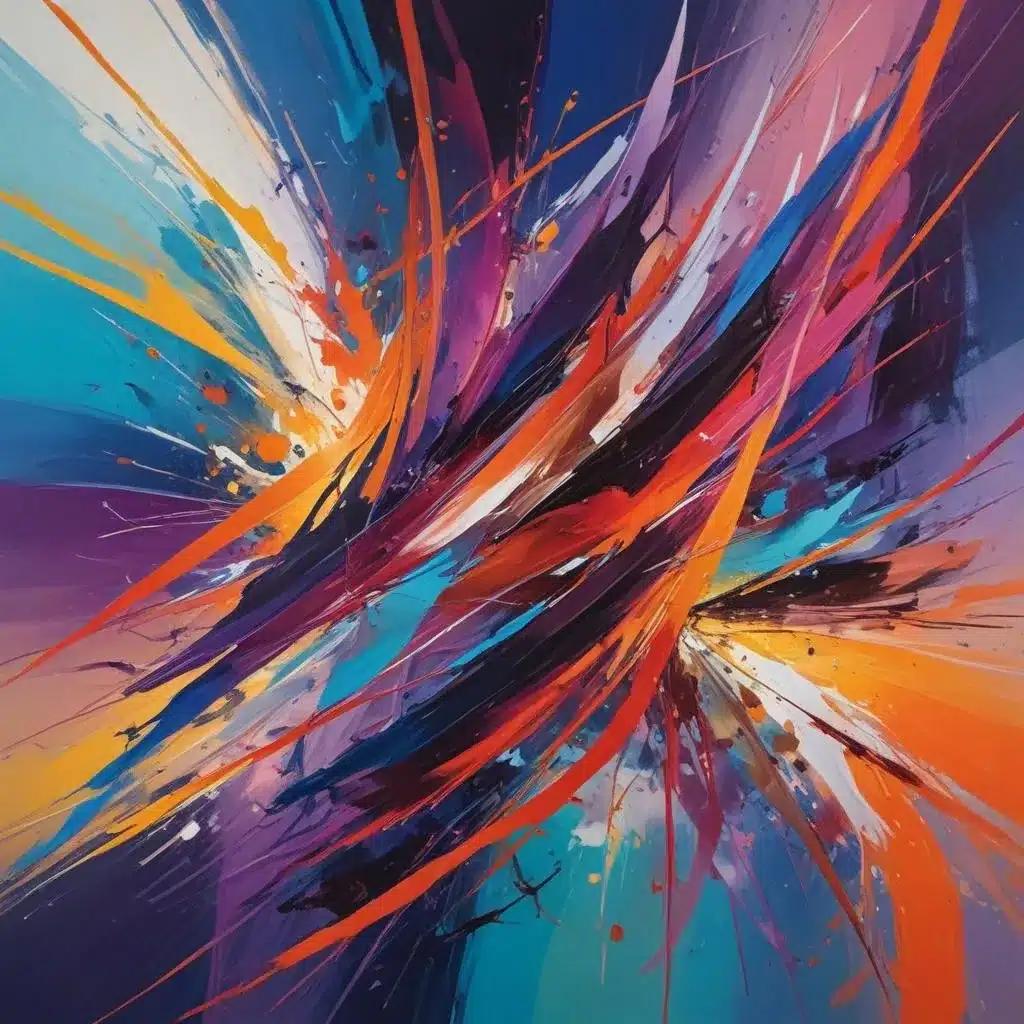
In the vibrant and ever-evolving world of contemporary art, the exploration of motion, dynamism, and visual perception has become a captivating frontier for many artists. One such realm where this creative pursuit thrives is the realm of kinetic compositions—works that harness the power of movement, both actual and implied, to engage the viewer in a captivating visual dance.
Now, this might seem counterintuitive…
The Allure of Kinetic Art
At the heart of kinetic art lies the drive to capture the essence of motion, to transform the static canvas into a pulsing, living entity. Whether through the use of mechanical devices, the interplay of light and shadow, or the strategic application of paint, kinetic artists seek to create a sense of energy and vitality that transcends the traditional boundaries of the two-dimensional format.
One of the pioneers of this dynamic art form was the Venezuelan artist Carlos Cruz-Diez, whose groundbreaking explorations of color, perception, and movement have left an indelible mark on the art world. Cruz-Diez’s kinetic sculptures and vibrant color installations challenged the viewer’s senses, inviting them to actively engage with the work and explore the ever-changing visual experience.
Similarly, the renowned Israeli artist Yaacov Agam is renowned for his kinetic paintings and interactive sculptures, which employ a range of techniques to create the illusion of movement and transformation. Agam’s works often feature geometric shapes, bold colors, and shifting perspectives, ultimately inviting the viewer to become an active participant in the creative process.
Capturing the Dynamism of Motion
As artists seek to capture the essence of movement, the medium of acrylic paint has emerged as a versatile and powerful tool. The fluid, adaptable nature of acrylics lends itself well to the creation of kinetic compositions, allowing artists to experiment with a wide range of techniques and approaches.
One key aspect of crafting dynamic acrylic abstracts is the mastery of expressive brushwork. By employing bold, gestural strokes, artists can imbue their compositions with a sense of energy and vitality, as if the paint itself is in a state of perpetual motion. The strategic use of impasto techniques, where the paint is applied in thick, textural layers, can further enhance the illusion of movement, casting shadows and highlights that dance across the canvas.
Equally important is the consideration of compositional elements, such as rhythm, balance, and visual tension. By strategically arranging shapes, lines, and color blocks, artists can create a sense of dynamism and visual momentum that draws the viewer’s eye through the work, inviting them to explore the unfolding narrative.
Tapping into Creative Inspiration
For artists seeking to create kinetic compositions, the world around them serves as a boundless source of inspiration. By closely observing the natural rhythms and patterns of the physical world—the undulating waves of the ocean, the swaying branches of trees, the fluttering of a bird in flight—artists can capture the essence of movement and translate it onto the canvas.
In addition to drawing inspiration from the natural world, kinetic artists may also find creative impetus in the realm of technology, science, and mathematics. The exploration of optical illusions, geometric forms, and mathematical principles can lead to the development of visually striking and conceptually engaging works that challenge the viewer’s perceptions.
Pushing the Boundaries of Acrylic Painting
As artists delve into the world of kinetic compositions, the medium of acrylic paint offers a wealth of possibilities for experimentation and innovation. From the use of unconventional tools and mixed media techniques to the incorporation of light-based elements and interactive components, the creative potential of acrylic painting is truly boundless.
One approach that has gained traction in the realm of kinetic art is the use of digital technologies to enhance and augment the physical painting process. By integrating projection mapping, LED lighting, or motion sensors, artists can create works that respond to the viewer’s presence, further blurring the lines between the static and the dynamic.
Practical Tutorials and Techniques
For aspiring artists seeking to hone their skills in creating kinetic compositions, a wealth of practical resources and tutorials are available. Online platforms such as Pencil and Paint Muse offer a wealth of information, including step-by-step demonstrations, skill-building exercises, and expert insights from established artists.
One fundamental technique to explore is the layering of transparent acrylic washes, which can create the illusion of depth and movement. By building up a series of translucent color fields, artists can imbue their compositions with a sense of depth and visual complexity, inviting the viewer to engage with the work on a deeper level.
Another invaluable skill to develop is the mastery of expressive brushwork, which can infuse a painting with a dynamic, kinetic energy. Through the use of bold, gestural strokes, impasto techniques, and diverse mark-making approaches, artists can cultivate a unique visual language that captures the essence of movement and transformation.
Embracing the Creative Journey
As artists delve into the captivating realm of kinetic compositions, they embark on a journey of exploration, experimentation, and creative fulfillment. By embracing the dynamic potential of acrylic paint, they can craft works that challenge the viewer’s perceptions, inviting them to engage with the work on a multisensory level.
Whether through the use of vibrant color palettes, geometric forms, or unexpected materials, kinetic artists are pushing the boundaries of the medium, redefining the way we think about and experience visual art. And as they continue to push the limits of their creativity, they inspire us all to embrace the power of movement, to celebrate the ever-changing nature of the world around us, and to find new and innovative ways to express the boundless energy that courses through the creative spirit.
Tip: Practice daily sketching to continually refine your technique